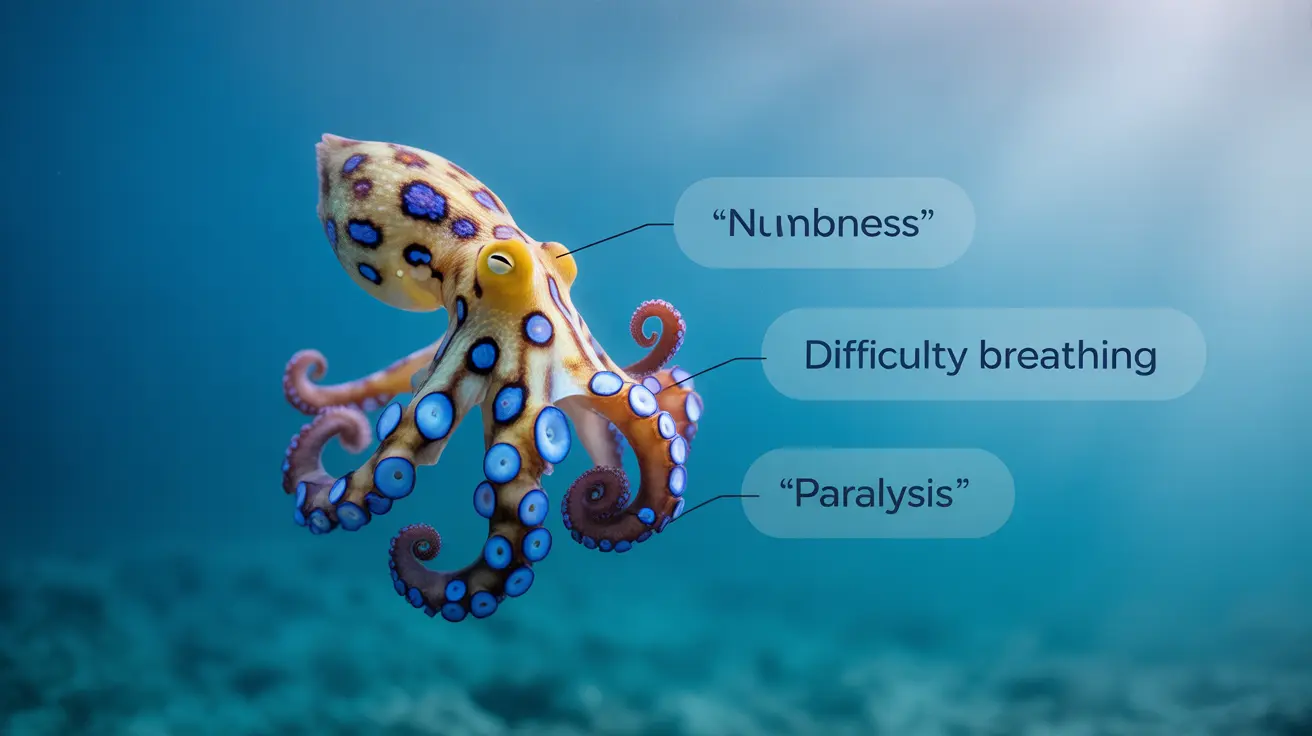The blue ringed octopus, while small and beautiful, harbors one of the ocean's deadliest venoms. Understanding the risks, symptoms, and immediate response to a bite from this creature could mean the difference between life and death. This comprehensive guide provides crucial information about blue ringed octopus bites and the essential steps for survival.
Understanding the Blue Ringed Octopus and Its Venom
The blue ringed octopus contains tetrodotoxin, a powerful neurotoxin that can cause respiratory failure within minutes. This venom is particularly dangerous because it's colorless, odorless, and can be transmitted through a nearly painless bite, making immediate recognition crucial for survival.
Immediate Signs and Symptoms
Recognition of bite symptoms is critical for prompt medical intervention. The progression typically follows a distinct pattern:
- Numbness around the mouth and face
- Difficulty breathing or shortness of breath
- Progressive muscle weakness
- Nausea and vomiting
- Impaired vision or blindness
- Loss of motor coordination
- Paralysis
Critical First Response Actions
Time is of the essence when dealing with a blue ringed octopus bite. Immediate action can significantly improve survival chances:
- Apply pressure-immobilization bandaging
- Keep the victim as still as possible
- Call emergency services immediately
- Begin rescue breathing if necessary
- Document the time of the bite if possible
Medical Treatment Approach
While there is no specific antivenom available, medical professionals focus on life-support measures:
Treatment typically involves mechanical ventilation and supportive care until the body metabolizes the toxin, which usually takes 24-48 hours. The victim must receive immediate medical attention at a facility equipped to provide respiratory support.
Prevention Strategies
The best defense against blue ringed octopus bites is prevention through careful practices:
- Never handle or touch these octopuses
- Wear protective footwear in tide pools
- Stay alert in known habitat areas
- Educate children about the dangers
- Avoid reaching into rock crevices or shells
Frequently Asked Questions
What are the symptoms and first signs of a blue ringed octopus bite in humans?
The initial signs include numbness around the mouth and face, followed by difficulty breathing, muscle weakness, and potential paralysis. These symptoms can appear within minutes of the bite.
How quickly do blue ringed octopus bite symptoms appear, and what is the risk of death?
Symptoms typically appear within 5-10 minutes of the bite. Without prompt medical intervention, the risk of death is extremely high due to respiratory failure, which can occur within 30 minutes.
What should you do immediately after a blue ringed octopus bite for best survival chances?
Apply pressure-immobilization bandaging, keep the victim still, and seek emergency medical care immediately. If breathing stops, begin rescue breathing while waiting for medical help.
Is there an antivenom or specific medical treatment for blue ringed octopus bites?
There is no antivenom available. Treatment focuses on life support measures, particularly mechanical ventilation, until the body naturally processes the toxin, typically over 24-48 hours.
How can I prevent a blue ringed octopus bite while swimming or exploring tide pools?
Never touch or handle blue ringed octopuses, wear protective footwear when exploring tide pools, stay vigilant in their known habitats, and avoid reaching into rock crevices or shells where they might hide.




